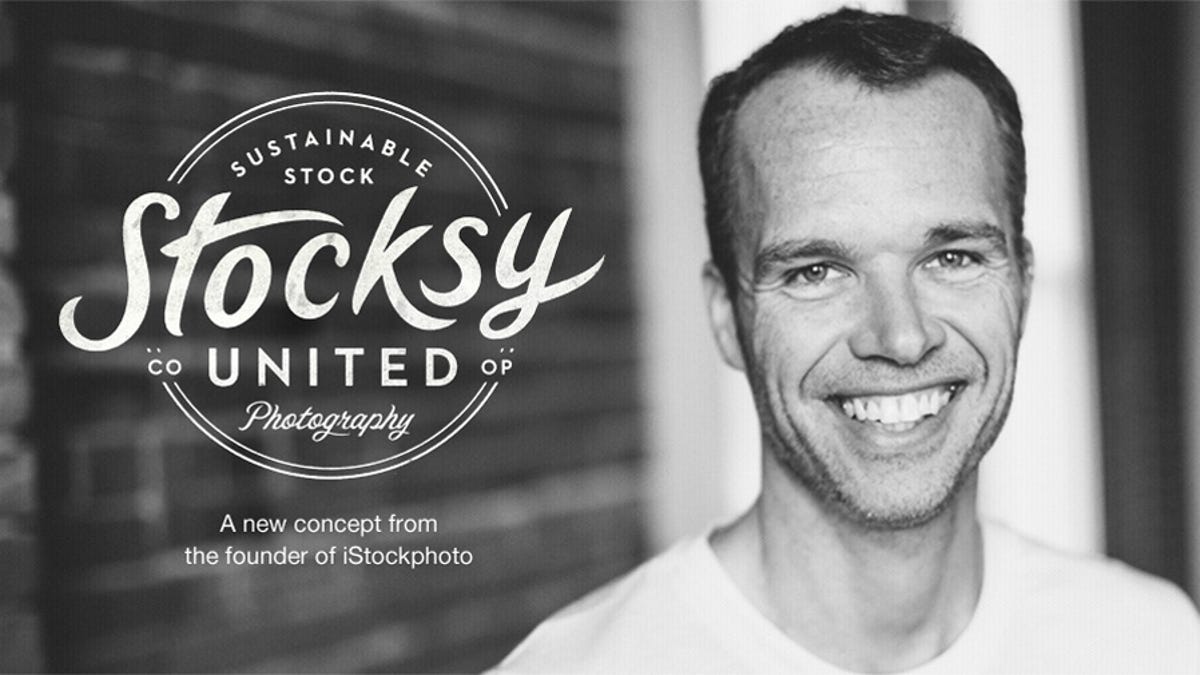iStockphoto founder re-enters the market with Stocksy
Bruce Livingstone, a pioneer of Internet-based stock-art sales, is launching a new venture even has his original company struggles with some disgruntled photographers.

Bruce Livingstone, who founded microstock powerhouse iStockphoto more than a decade ago and left it in 2009, is trying again with a new stock-art sales venture called Stocksy.
And he's doing it at a time when iStock is, if not necessarily vulnerable, the target of criticisms that it's out of touch with the army of photographers who contribute the imagery it licenses. To succeed, a microstock needs lots of customers licensing its photos, videos, and other works, and it needs a lot of contributors supplying a steady stream of fresh material.
It's these contributors Livingstone appears to be aiming to attract. The site describes Stocksy as "a stock photography cooperative owned and operated by artists," and it says contributors will have a stake in its success:
Our purpose is to create sustainable careers, ownership, and a long-term professional and equity strategy for our members.
Stocksy pays the highest royalty in the industry as well as dividends and patronage performance returns to artists, 50 percent on regular sales and 100 percent of extended licenses. By design, Stocksy pays out all profits to artists. In addition to paying dividend and patronage fees to artists on a yearly basis, each member of the co-op owns real equity in the company.
Livingstone declined to comment for this story.
Stocksy will face plenty of competitive challenges, and not just from iStockphoto, which since 2006 has been part of old-school stock-art firm Getty Images.
The microstock industry's growth was fueled by the abundance of low-cost, high-quality digital cameras and the Web, which provided a quick way to reach a global marketplace. Now there are dozens of microstocks around, including Fotolia, Dreamstime, and Shutterstock, which is confident enough of growth that it went public in 2012.
But iStockphoto evidently is a source of talent for new microstocks. A case in point is photographer Sean Locke, who with 12,781 images and more than 900,000 sales is one of its top five contributors and a person who earned nearly all his income from sales through the company.
A week ago, iStock said it is terminating its relationship with Locke. According to his blog post on the subject, iStock was displeased with Locke's actions involving a Getty Images licensing deal with Google and with the fact that Locke had begun working with another stock-art firm.
"They also knew (somehow!) that I had joined this new stock site, even though it was closed to all but a relatively small group, and declared that this was against the 'spirit of the exclusivity agreement,'" Locke said.
Contributors often sign exclusivity contracts that pay them higher royalties if they agree to sell their imagery only through one microstock. Shutterstock founder Jon Oringer thinks exclusivity is bad -- "As a microstock photographer it just doesn't make sense to be exclusive to any one agency," he said in a January blog post -- but it's common. Now, though, Locke said he's moving his portfolio to multiple iStock competitors.
In a statement, iStockphoto laid the blame on the termination on Locke's helping a competitor:
In addition to other factors, Mr. Locke was actively recruiting exclusive iStock contributors to work with a competitive venture which is directly at odds with his relationship with iStockphoto. Given these actions, we made the decision to part ways with Mr. Locke under the terms of his exclusive agreement. We are excited to continue to work with the tens of thousands of contributors committed to the continued success of iStockphoto and Getty Images -- and wish Mr. Locke the best in his future endeavors.
Locke couldn't immediately be reached for comment about the recruiting issue. In his post, though, he said the severed relationship was liberating.
And the strong relations with contributors from iStockphoto's early days have faded, said Lee Torrens, author of the Microstock Diaries blog.
"iStock's soul is long gone," Torrens said. "They wiped out the entire content team, which was what kept the community functional...With the absence of leadership, old-time exclusives [exclusive photographers] are starting to jump ship. That probably doesn't hurt customers, but it bruises their reputation inside the industry."
Another photographer given the boot is Rob Sylvan, who also is author of "Lightroom 2 for Dummies." "I am very glad that I quit when I did and am no longer reliant on them as a source of income. I would urge any other iStock contributor to make sure you have a solid backup plan in place, and any exclusive contributor to start working on an exit strategy," he said in a comment to Locke.
iStockphoto said Sylvan "is identified as an administrator of a competitive venture's social media page, which, again, is directly at odds with his relationship with iStockphoto."
Some seeds of Locke's discontent were sown by the Getty deal with Google Drive, under which photographers' works could be used on Google Apps' online services for tasks such as word processing and presentations. The deal granted Google Apps users rights to 5,000 images, but they can be downloaded to a local computer and have copyright information and other metadata stripped out.
Locke objected to the Google Drive deal on iStock's forums, and a ruckus ensued with many photographers objecting. iStock scrambled to pull together its explanation as users howled.
Yesterday, iStock told CNET News it hopes for at least some changes to the Google Drive deal: "We can confirm that contributors were paid royalties for the use of their content in the license deal with Google. We are working with Google to refine the implementation which we believe will address some of the concerns raised by contributors."

